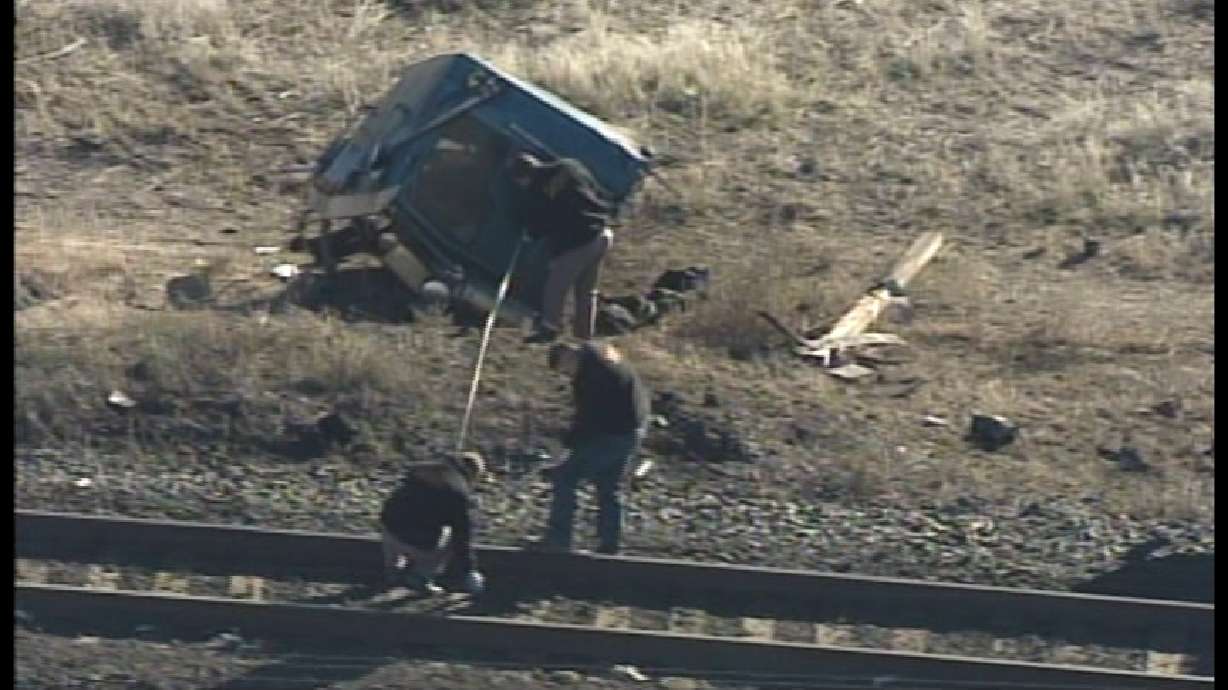Estimated read time: 2-3 minutes
This archived news story is available only for your personal, non-commercial use. Information in the story may be outdated or superseded by additional information. Reading or replaying the story in its archived form does not constitute a republication of the story.
SALT LAKE CITY (AP) -- The fatal truck-Amtrak collision earlier this month has renewed calls for more crossings with warning devices.
But little money is available for the upgrades.
In the past 10 years, 41 people have been killed at Utah railroad crossings.
More than half of them were at intersections where only a sign warned of a rail line. Most of the 914 crossings in Utah only have signs, and 61 have no warning at all, according to Federal Railroad Administration data.
Federal investigators still are reviewing details of the Dec. 14 crash near Moab where an Amtrak train struck a semitrailer truck. The driver of the rig, David Miller, 26, of Clifton, Colo., was killed.
The rural crossing has only signs called crossbucks. Nearly 380 crossings in Utah have that sign as their only warning mark.
Supporters of increased crossing protection argue that active intersections -- those with flashing lights and gates that close when a train approaches -- are safer. But active crossings aren't cheap.
The Utah Department of Transportation annually has about $1 million to improve crossings. It estimates an upgrade to flashing lights and gates can cost $200,000 to $400,000 for each intersection.
"We would like to be able to address all the crossings and be able to put the appropriate warnings for them," Michael Seely, chief railroad and utilities engineer for UDOT, told The Salt Lake Tribune. But costs are prohibitive, and since the signs are technically road signs, it is the state's responsibility to pay.
"We do try to identify those that are the most needing improvements and address those first," he said. The crossing where the accident happened Dec. 14 will get reviewed for a possible upgrade, Seely said.
Accidents between trains and vehicles have gone down, according to Operation Lifesaver, a nonprofit supported by rail companies that seeks to educate drivers about crossings.
In 1972, there were an average of 12,000 accidents. In 2003, the number was reduced to about 3,000, the organization said.
The flashing lights and gates don't always stop deaths.
In 2004, an Oregon woman drove her motor home into a train in Juab County, killing her and injuring her husband. Investigators said the crossing had flashing lights and bells and both were working at the time of the crash.
Two years before, a TRAX train hit and killed a 17-year old at a station in Sandy, despite signs, gates, lights and a train bell.
In the past 10 years in Utah, 17 people have been killed and 22 injured at crossings with either flashing lights, bells or gates, or a combination of the three.
"Usually lights or gates don't stop people from going around," said Vern Keeslar, state coordinator for Operation Lifesaver.
Keeslar said that no matter what warning devices there are, drivers should always expect a train and know that a train cannot stop quickly. The best protection, he says, is education.
(Copyright 2005 by The Associated Press. All Rights Reserved.)








